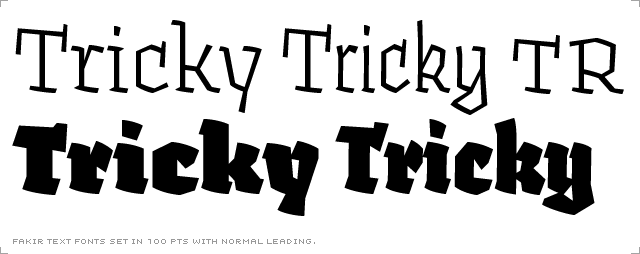
It’s very uncommon for a blackletter family to have a display variant, as well as a variant for small text sizes. That’s one of the weird aspects of Fakir.
Fakir text family
When compared to display sizes the text sizes need different optical tricks
to maintain legibility and economical type setting. In very small sizes the
best space saving trick is to give generous widths to the characters, which
allows the white spaces to live healthily in and around the letters,
creating a legible word at even tiny sizes. Instead of condensing fonts for
text sizes to save space, it is better to scale the point size down, and
leave the letters wide. Fakir Regular is wide and has low contrast between
thin and thick parts of the letters, making scaling to small sizes safe.
The Fakir Text family has real italics, which is unusual for a blackletter.
Italics create more typographic contrast for emphasizing words.
By default the leading in Fakir text fonts is rather large. Ample leading between the text lines increases the legibility of continuous text.
Fakir display family
Fakir's display fonts have many more details than the text fonts. An 'o' has
8 interrupted strokes while the same count for the text size 'o' is 6. One
could say that the scribe took greater time and care to write his headlines
while he inscribed the text sizes more quickly.
All display fonts are narrower than the text fonts to save space in
headlines. For the same reason, ascenders and descenders are very short.
Also, as a standard, the leading in Fakir display fonts is minimal. Narrow
leading is practical for tight headlines, and for longer black text masses.